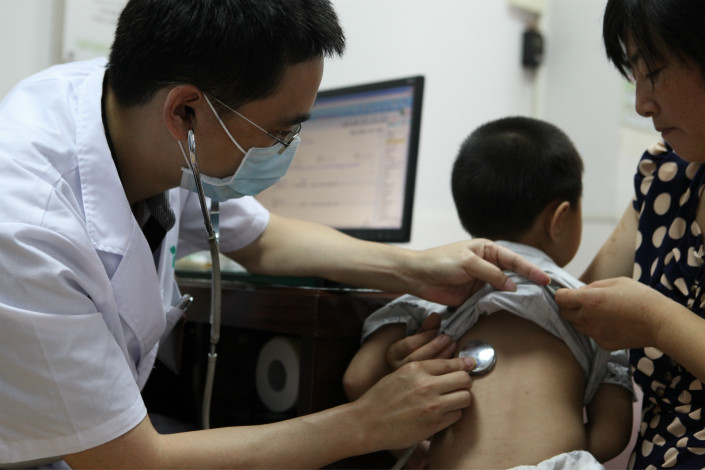Underqualified Doctors Plague China’s Health Care System

(Beijing) — A shortage of general practitioners and the lack of professional qualifications among nearly half the doctors in the country are undermining China’s efforts to overhaul its health care system.
Only 51 % of doctors, including surgeons, in the country had a five-year medical degree — the minimum requirement to get a physician’s license in many countries, including the U.K., data from the National Health and Family Planning Commission showed. In comparison, in the U.S., trainees need to complete a four-year undergraduate-degree program, then spend another four years in medical school and complete three to seven years of residency training before they are eligible for a medical license.
In China, individuals with a three-year “advanced medical diploma” from a university and two to three years of residency training can get a doctor’s license.
To improve the overall level of medical care at public hospitals, the government was also encouraging medical schools that offer a five-year degree to recruit more students in coming years.
The lack of professional qualifications among doctors has created mistrust among patients and resulted in a string of “yinao,” or violent acts targeting medical workers, in recent years.
In one of the latest incidents, a man killed a pediatrician in Laiwu, Shandong province, in October, after the death of the man’s newborn baby in January 2016. Police are still investigating the case.
The shortage of general practitioners, who serve as the first point of call for many patients, is another issue ailing China’s public health system. As a result, specialists are overstretched, having to treat both complex illnesses and common colds.
China had 3.2 million licensed doctors at the end of 2016, but only 6.6% of them were GPs, or family doctors, who usually serve at community clinics and small hospitals, data from the health commission showed.
This meant China was far behind some developed countries such as the U.S., where up to 40% of licensed physicians are general practitioners (GPs), said Qin Huaijin, head of the commission’s Department of Health Science, Technology and Education, on Wednesday.
This could undermine the government’s efforts to reduce overcrowding at major city hospitals and ease the burden on specialists by introducing a referral-based system. Such a program would require a patient to have a letter from a primary care doctor to see a specialist — a common practice in most public health systems the world over. Policymakers are yet to announce a timeline to introduce a referral system.
A shortage of family doctors may also affect China’s ability to offer adequate care for its rapidly aging population, according to Liu Liqun, a policymaker from the commission’s primary health department.
A quarter of China’s population is expected to be over the age of 60 by 2030, up from 16% at the end of 2015, according to estimates by the Ministry of Civil Affairs. Over 100 million seniors are expected to develop chronic diseases such as diabetes or dementia by 2030, driving up the demand for GPs, Liu said.
To handle this avalanche of patients, China needs at least three GPs per 10,000 people by 2020, he said. The country needs to train 100,000 to 200,000 family doctors to meet this target, he added.
But most medical school graduates prefer to become specialists given the comparatively low pay for GPs. Becoming a family doctor is also seen as a “dead end job” with not many opportunities for career advancement.
To boost the number of GPs, the national health commission has increased the stipend for medical school graduates who join training programs to get accredited as family doctors, Qin said.
The central government also plans to spend 12.6 billion yuan ($1.86 billion) to train GPs over the next three years.
Contact reporter Li Rongde (rongdeli@caixin.com)

- MOST POPULAR






